Buttons, etc. Buttons, fastenings and cufflinks come in many shapes and sizes and are usually pewter, silver, or brass. Sometimes they are gold-plated, which always makes the weebler's heart beat just that little bit faster for a moment, as dreams of golden hoards arise. Here's a selection. |
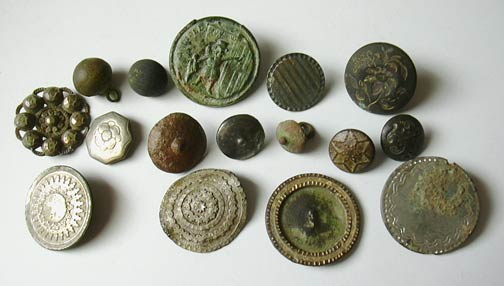
Decorative Buttons Some of the buttons that turn up are extremely ostentatious; detailed decoration, gold plating and so on. These date from the Tudor period (in the mid 1500's) to the late Georgian period. |
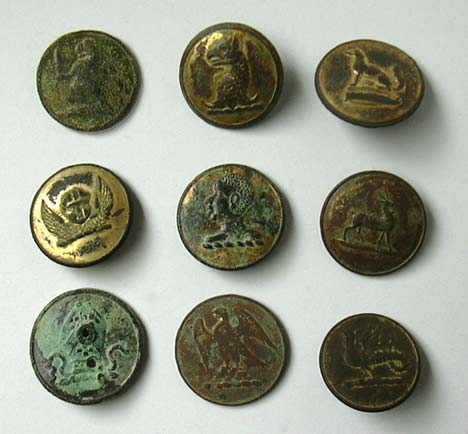
Livery Buttons During the last several hundred years, the aristocracy have spent much of their time wandering around the country attending house parties at the great stately homes. Being totally useless and therefore entirely incapable of doing anything for themselves, they had to be attended by hoards of servants. During the Georgian period (1700's) it became fashionable for those servants who would be seen in close proximity to the, er, great lords and ladies - coachmen, footmen, butlers and so on - to wear a distinctive uniform called 'livery', the buttons of which usually carried a design derived from the family coat of arms. The examples of livery buttons shown above may have been lost on hunting expeditions, as none were found anywhere near a large mansion. The one in the centre appears to show the head of a black slave, while many show mythical beasts. The one in the lower left corner shows a bishop's mitre. Huntin', shootin, fishin' and... prayin'? |
Back to top
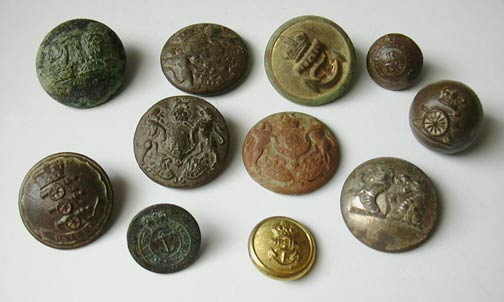
Military Buttons Regimental buttons are fairly common finds, as are those of other branches of the armed and civil services. Here is a selection ranging from the Crimean War to World War II, including buttons from the Grenadiers, the Royal Navy and the Coastguards. |
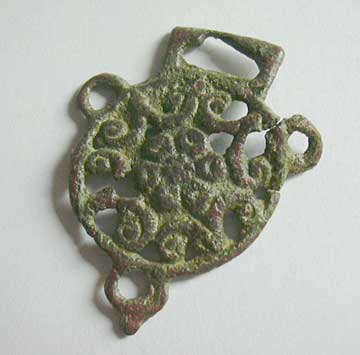
Fastener This clothing fastener - or rather, this half of it - dates from the mid-1600s. The slot at the top is shaped to hold the hook on the other half, and the three loops around the edge enabled it to be sewn into place. The decoration on this example makes it quite unusual. Quite a delicate item, it was found in a fairly uneven pasture field which has probably only rarely been ploughed, if ever. |
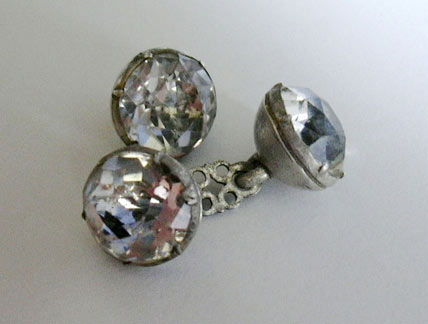
|
Victorian Cufflinks |
back to top
Home |
Collection |
Cartoons |
Stories |